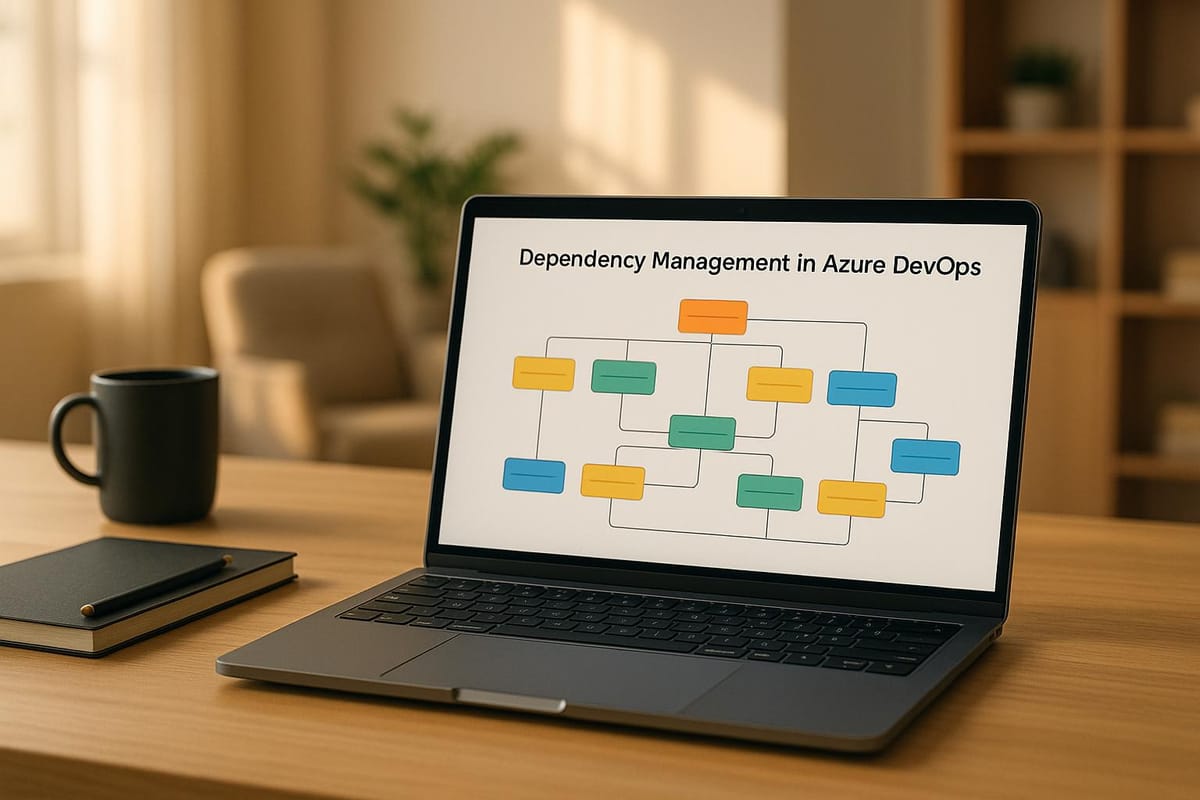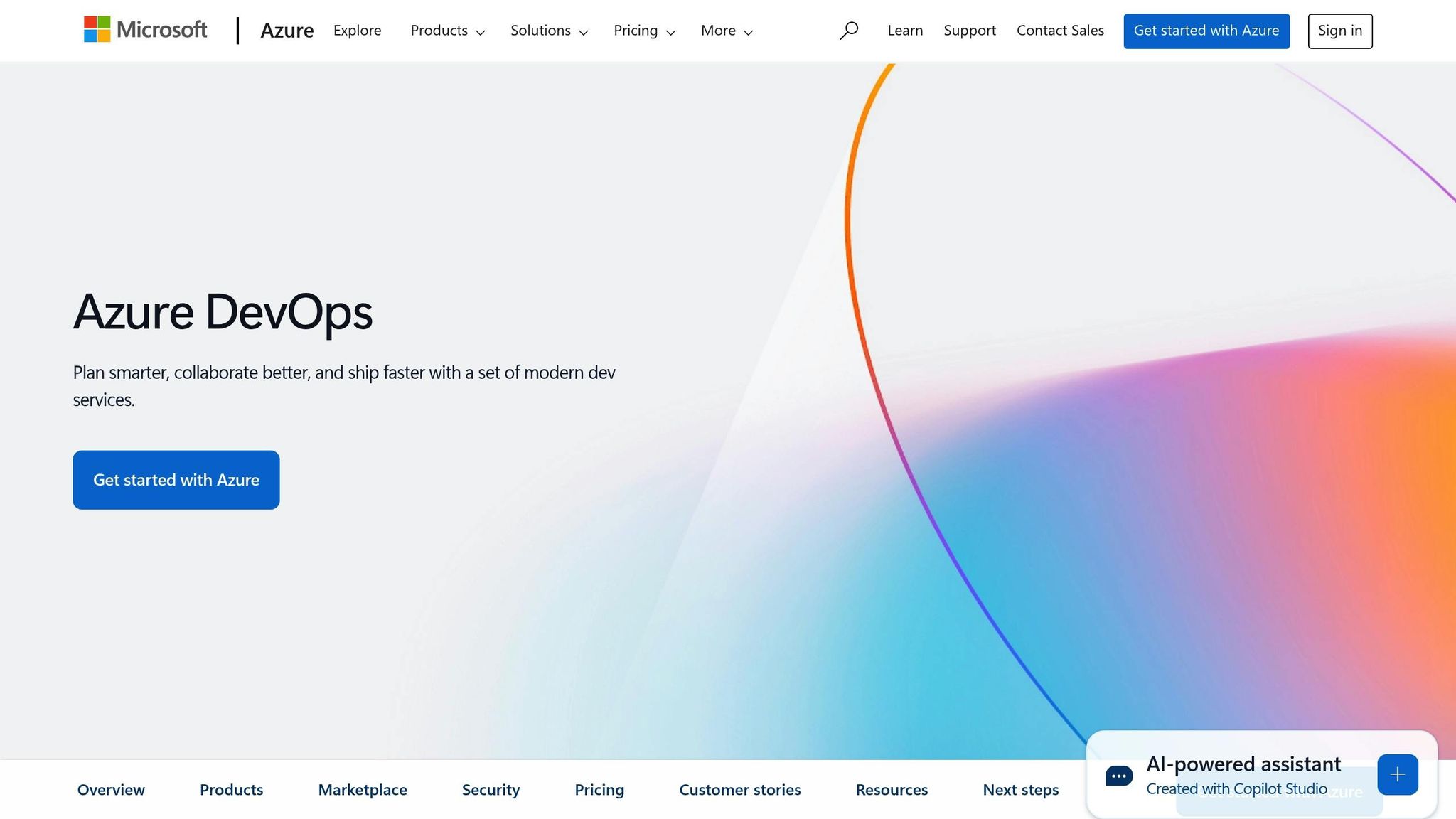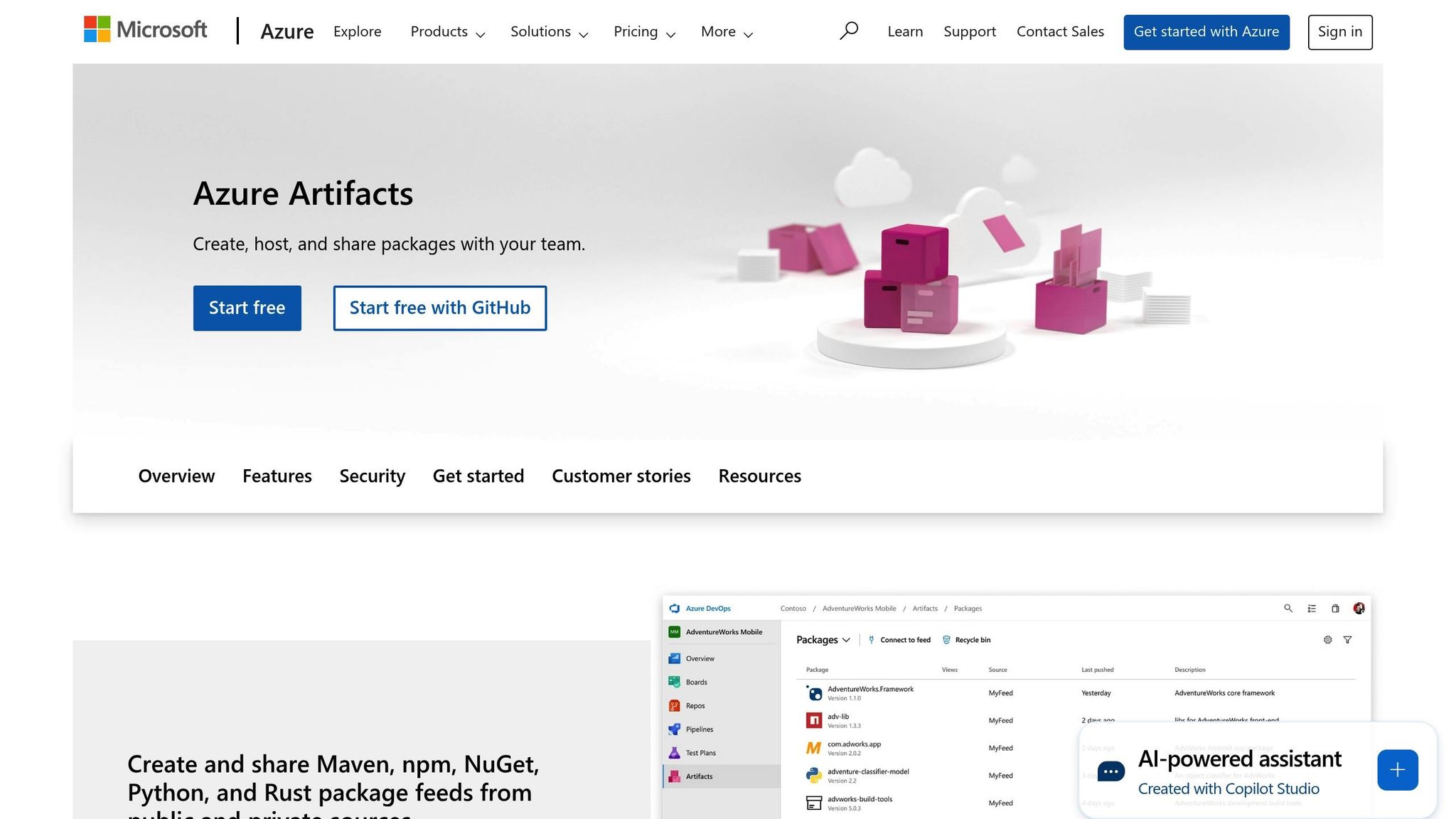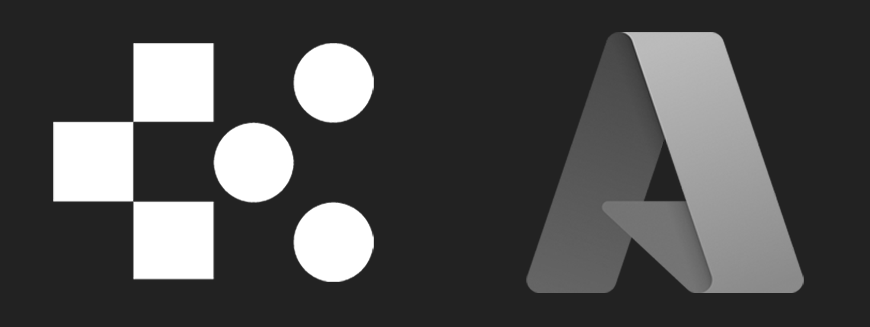Dependency Management in Azure DevOps
Learn how effective dependency management in Azure DevOps can streamline workflows for small and medium-sized businesses while ensuring security.

Dependency management in Azure DevOps helps you keep your software projects organised by tracking and controlling the components they rely on. For small and medium-sized businesses (SMBs), this means better collaboration, enhanced security, and simpler workflows. Here’s what you need to know:
- Tools to Use: Azure Artifacts for managing packages and Delivery Plans for visualising dependencies across teams.
- Key Features:
- Azure Artifacts: Private feeds, version control, access control, and upstream sources.
- Delivery Plans: Cross-team visibility, timeline management, and resource planning.
- Best Practices:
- Use semantic versioning (e.g., MAJOR.MINOR.PATCH) to manage updates.
- Automate monitoring for security, compatibility, and compliance.
- Apply retention policies to save storage and control costs.
| Tool | Use Case | Ideal for SMBs |
|---|---|---|
| Azure Artifacts | Package Management | Teams sharing components |
| Delivery Plans | Timeline Coordination | Multi-team collaboration |
Mastering Package Management for Azure DevOps Solutions ...

Azure DevOps Dependency Tools
Azure DevOps provides tools designed to simplify dependency management and keep workflows consistent, particularly for small and medium-sized businesses (SMBs).
Using Azure Artifacts

Azure Artifacts is a package manager that works seamlessly with your existing workflow. It supports popular formats like NuGet, npm, and Maven, making it versatile for different development needs.
Key features of Azure Artifacts:
- Private feed hosting: Securely host and manage private package feeds.
- Version control: Keep track of package versions with a detailed history.
- Upstream sources: Safely connect to public registries while maintaining control.
- Access control: Assign specific permissions to manage who can access packages.
To get started with Azure Artifacts, you can:
- Define whether feeds are visible across the organisation or limited to specific projects.
- Set retention policies to optimise storage costs.
- Enable upstream sources while maintaining security measures.
Managing with Delivery Plans
Delivery Plans provide a visual timeline to help teams coordinate deliverables and manage dependencies effectively.
Benefits of Delivery Plans:
- Cross-team visibility: Easily identify dependencies across various teams.
- Timeline management: Adjust schedules and monitor progress in a visual format.
- Capacity planning: Allocate resources and balance workloads efficiently.
To implement Delivery Plans:
- Create customised views for each team.
- Set milestones to align with project goals.
- Regularly track progress to ensure deadlines are met.
| Feature | Primary Use Case | Best for SMBs |
|---|---|---|
| Azure Artifacts | Package Management | Teams sharing components |
| Delivery Plans | Timeline Coordination | Multi-team collaboration |
Setting Up Dependency Management
Setting Up Azure Artifacts
To manage packages effectively with Azure Artifacts, follow these steps:
-
Create and configure feeds
Set up separate feeds for different types of packages and apply retention policies to balance storage use with keeping essential versions accessible.Feed Type Retention Period Storage Limit Development 30 days 2 GB Production 365 days 5 GB Shared Components 180 days 3 GB -
Set up access controls
Use role-based access control (RBAC) to manage permissions:- Assign the Reader role to users who only need to consume packages.
- Give Contributor access to development teams for package management tasks.
- Limit Owner permissions to lead developers for higher-level control.
-
Configure upstream sources
Enable upstream sources to securely access public packages. This includes:- Setting source priority
- Defining promotion policies
- Applying filtering rules to control package flow
Once feeds and access controls are in place, you can enhance the system by setting up automated monitoring to ensure dependency health and security.
Setting Up Automated Monitoring
Automating dependency monitoring helps maintain compatibility, security, and compliance across your project. Here’s how to set it up:
- Perform daily checks for version compatibility, security vulnerabilities, licence compliance, and package updates.
- Create custom widgets to display the status of dependencies.
- Set up threshold alerts to flag critical updates.
- Schedule automated reports for regular updates.
For private feeds, take additional steps to ensure security:
- Enable package signing to verify authenticity.
- Configure vulnerability scanning to catch potential risks.
- Use Azure Pipelines to automate dependency updates and streamline maintenance.
Dependency Management Guidelines
Version Control Methods
Use semantic versioning (SemVer) to manage changes effectively. This system uses a MAJOR.MINOR.PATCH format:
| Version Component | When to Increment | Impact Level |
|---|---|---|
| MAJOR | For breaking changes | High |
| MINOR | For new, backwards-compatible features | Medium |
| PATCH | For bug fixes (backwards-compatible) | Low |
Key version control practices include:
- Enforcing version policies: Prevent direct commits to main branches by using tools like Azure Artifacts.
- Branch policies: Set strict rules for main branches to ensure code quality.
- Version locking: Lock critical dependencies to specific versions for stability.
These practices ensure your dependencies remain secure and manageable.
Security Standards
A strong security framework is essential for protecting your dependency chain. Tools like Azure DevOps offer automated vulnerability scanning to identify risks early. To ensure security:
- Define severity thresholds to categorise and prioritise vulnerabilities.
- Track licence compliance to avoid legal issues.
- Perform regular security audits.
- Use automated tools for continuous vulnerability assessments.
This approach helps maintain a secure and compliant development environment.
Resource Management
Efficient resource management can help balance costs and performance. Here’s how you can optimise dependency resources:
- Package retention policies: Remove outdated packages to save storage.
- Caching mechanisms: Reduce bandwidth usage by caching frequently accessed resources.
- Resource quotas: Set limits for project teams to prevent overuse.
For more tips on optimising costs and performance in Azure environments, explore Azure Optimisation Tips, Costs & Best Practices.
Conclusion
Managing dependencies effectively in Azure DevOps is crucial for small and medium-sized businesses (SMBs). By leveraging tools like Azure Artifacts, Dependency Tracker, and Delivery Plans, you can simplify workflows while keeping security measures in place.
These tools offer automated monitoring and reliable version control, protecting your pipeline. Configuring them correctly can also help reduce costs without affecting performance.
For SMBs growing on Azure, managing dependencies efficiently supports both day-to-day operations and long-term expansion. Combining automation with smart resource management creates a strong foundation for development.
Here are a few key practices to integrate dependency management smoothly into your projects:
- Automate monitoring and tracking
- Regularly update security protocols
- Adjust resource allocation based on actual usage
For more insights on optimising Azure costs and performance, check out Azure Optimization Tips, Costs & Best Practices.
FAQs
How can small and medium-sized businesses use Azure Artifacts and Delivery Plans in Azure DevOps to improve their workflows?
Azure Artifacts and Delivery Plans in Azure DevOps offer SMBs powerful tools to streamline development and project management workflows. Azure Artifacts simplifies dependency management by allowing teams to create, host, and share packages securely within their organisation, reducing the risk of versioning conflicts and ensuring consistency across projects.
Delivery Plans help SMBs visualise and align their work across multiple teams and projects. By providing a timeline view of work items, it becomes easier to track progress, identify bottlenecks, and ensure deadlines are met. These tools are especially valuable for SMBs aiming to scale efficiently while maintaining control over their development processes.
How can I ensure security and compliance when managing dependencies in Azure DevOps?
To ensure security and compliance when managing dependencies in Azure DevOps, follow these key steps:
- Enable Dependency Scanning: Use tools like Azure Artifacts and Dependency Scanning to identify and mitigate vulnerabilities in your code dependencies.
- Set Up Access Controls: Implement role-based access controls (RBAC) to restrict who can add, modify, or approve dependencies.
- Monitor for Updates: Regularly review and update dependencies to ensure they are using the latest, secure versions.
- Automate Compliance Checks: Configure pipelines to include automated compliance checks, ensuring all dependencies meet organisational and regulatory standards.
By adopting these practices, you can maintain a secure and compliant environment while efficiently managing dependencies on Azure DevOps.
What role does semantic versioning play in managing dependencies effectively in Azure DevOps?
Semantic versioning is a system for assigning version numbers to software that helps teams manage dependencies more effectively in Azure DevOps. By following a standard format (e.g., MAJOR.MINOR.PATCH), it becomes easier to understand what changes have been made and whether they might affect compatibility.
For example, increasing the MAJOR version (e.g., 1.0.0 to 2.0.0) indicates breaking changes, while a MINOR update (e.g., 1.0.0 to 1.1.0) adds new features without breaking existing functionality. A PATCH update (e.g., 1.0.0 to 1.0.1) typically includes bug fixes or small improvements. This clarity ensures teams can confidently update dependencies without unexpected issues, streamlining workflows and reducing risks in your DevOps pipeline.




